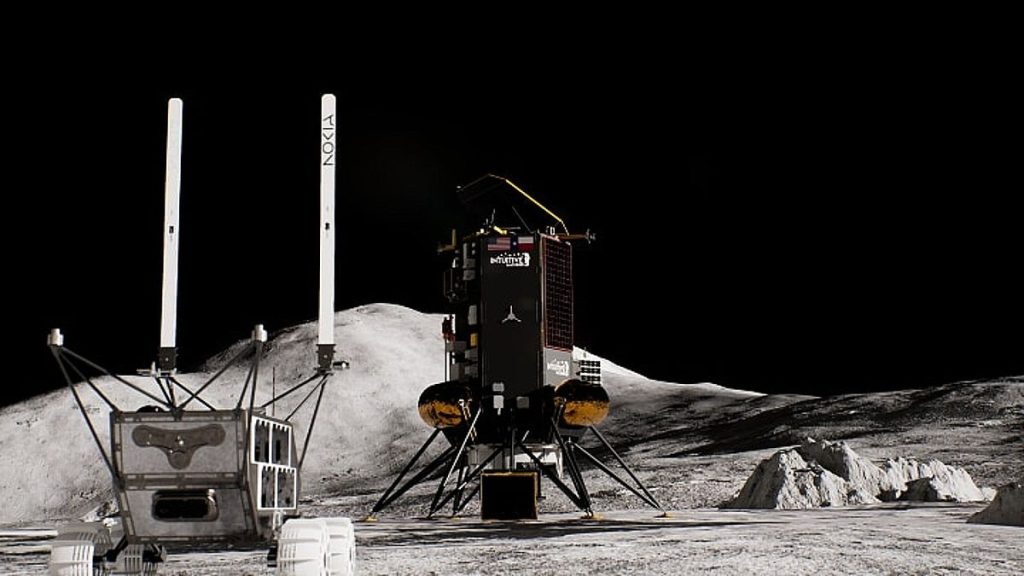When NASA’s Artemis 3 crewed mission lands on the lunar surface a few years from now, the first astronauts to walk on the moon since the Apollo age will be able to take advantage of something their antecedents could not: cellular network technology.
Artemis 3‘s astronauts will wear spacesuits equipped with 4G connectivity — the same 4G that makes up the majority of Earth’s mobile phone networks today. The spacesuits, Axiom Space’s AxEMU models, will be able to connect to a 4G network designed by Nokia. Astronauts can use the network to perform feats like broadcasting high-definition video.
On Earth, a mobile network consists of a grid of base stations — the towers that dot the 21st century’s landscape — equipped with a radio array. A wholesale mobile tower is obviously a bit difficult to carry to the moon, so Nokia’s design compresses all of a tower’s base station equipment into a box that can fit onto a lunar lander.
“For the Artemis 3 mission, we will be able to reach astronauts up to 2 kilometers [1.25 miles] away from the lander,” Thierry E. Klein, president of Nokia Bell Labs Solutions Research, told Space.com.
Related: Private moon lander will carry Nokia’s 4G cell network to the lunar surface this year
The AxEMU spacesuits, then, will be able to connect to the base station. They won’t have a smartphone’s touchscreen or interface, but they will be able to stream high-definition video or transmit large volumes of scientific data back to the base station — and, then, by extension, back to Earth.
“From a communication perspective, the key components of a smartphone will be integrated with the spacesuit and adapted to the space environment and operational requirements,” Russell Ralston, executive vice president of extravehicular activity at Axiom Space, told Space.com.
Traditionally, crewed missions have relied on ultra-high frequency (UHF) radio for communications. UHF has worked well, but 4G comes with higher bandwidth and faster speeds. Hence, Nokia has been developing the technology for space applications for some years now, helped by a $14.1 million NASA grant in 2020.
The planned lunar 4G network, known as the Lunar Surface Communications System (LSCS), will undergo its first test later this year, when Intuitive Machines’ robotic IM-2 mission lands near the lunar south pole. IM-2’s lander will carry the base station, while two of IM-2’s payloads — the Mobile Autonomous Prospecting Platform (MAPP) rover and the Micro-Nova drone — will carry 4G receivers.
Indeed, Nokia imagines that 4G connectivity could benefit future missions beyond Artemis 3’s astronauts and their successors. Astronaut vehicles like the Lunar Terrain Vehicle might also have 4G connectivity. Smaller devices could also connect to the network — Nokia pictures 4G receivers fitting into science experiments or lunar sensors. In the future, a crewed lunar lander could serve as a central hub binding together a web of smaller devices, linking them directly to Earth.
More immediately, Artemis 3 is the goal. Over the remainder of 2024 and into 2025, the 4G-equipped suit will undergo a series of tests — including in vacuum chambers and in the indoor pool at NASA’s Johnson Space Center in Houston — to ensure that both the suit and its components hold up in the extreme conditions to which it will be exposed during life on the moon.

